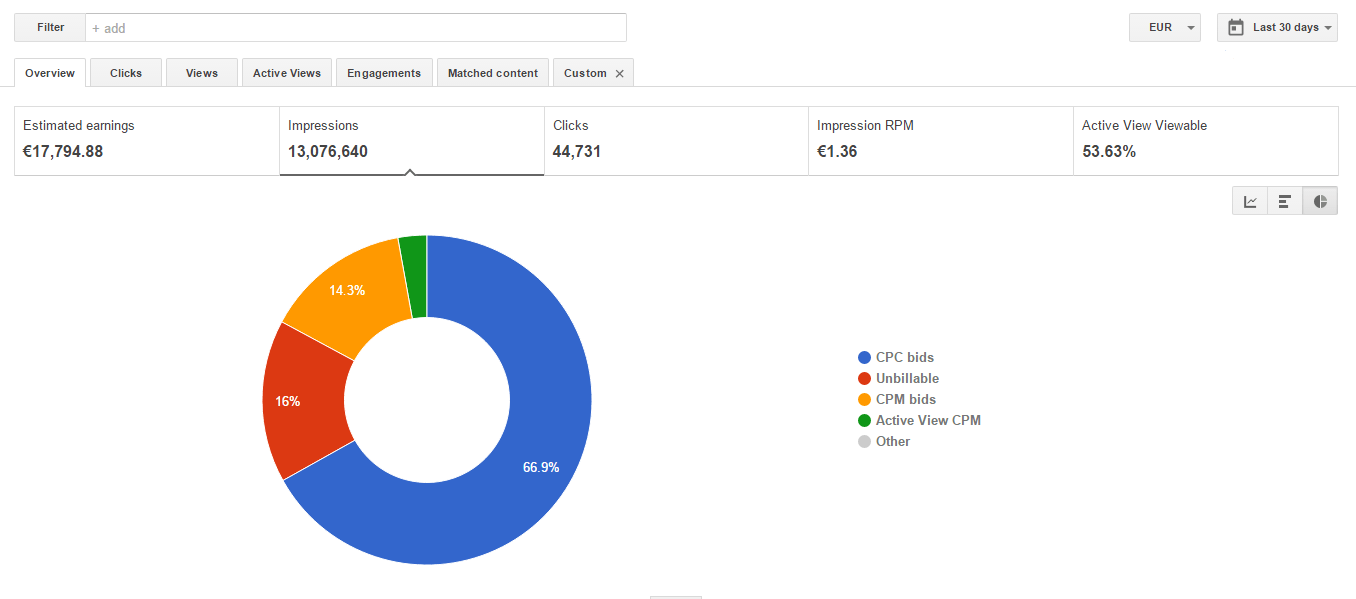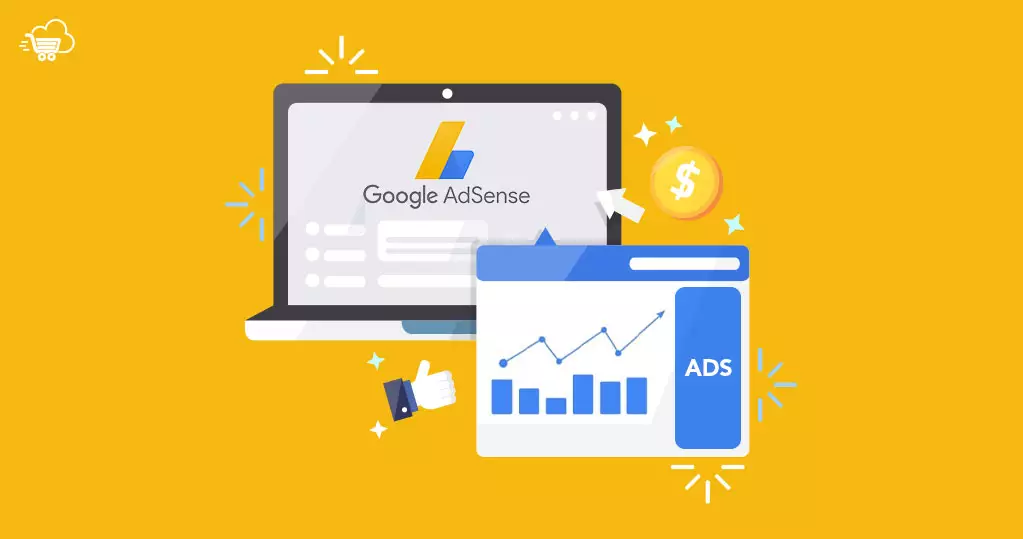Google AdSense works by allowing website owners to display ads on their websites and earn revenue when users interact with those ads. Here’s how it works:
- Website owners sign up for AdSense and create an account.
- Google provides the website owner with a code snippet that is placed on their website’s HTML code.
- AdSense analyzes the content of the website and displays ads that are relevant to the content and user’s interests.
- Users who visit the website see the ads and may click on them.
- When a user clicks on an ad, the website owner earns revenue, which is shared with Google.
The amount of revenue earned by the website owner depends on factors such as the number of clicks on the ads, the cost-per-click of the ads, and the volume of traffic to the website. AdSense uses a real-time auction process to determine the cost-per-click of the ads and to ensure that the highest-paying ads are displayed to users.
AdSense also provides website owners with tools to track their ad performance, optimize their ad placement, and improve their revenue. Overall, Google AdSense provides a simple and effective way for website owners to monetize their traffic and earn revenue from their websites.
How google adsense ads perfoam
Google AdSense ads perform based on a few factors, such as the relevance of the ads to the content of the website and the user’s interests. Here are some of the key factors that influence how AdSense ads perform:
- Ad relevance: AdSense uses contextual targeting to display ads that are relevant to the content of the website. This means that the ads are more likely to attract user’s attention and generate clicks.
- Ad placement: The placement of the ads on the website can impact their performance. Ads that are placed above the fold, or at the top of the page, tend to perform better than ads that are placed lower down.
- Ad format: AdSense offers a range of ad formats, including display ads, text ads, and link units. Different formats may perform better for different websites and audiences.
- User behavior: AdSense uses machine learning to analyze user behavior and display ads that are more likely to generate clicks. For example, if a user has previously clicked on ads related to a specific product, AdSense may display more ads related to that product in the future.
- Ad competition: AdSense uses a real-time auction system to determine the cost-per-click of the ads. The more competition there is for a particular keyword or ad placement, the higher the cost-per-click will be, which can impact ad performance.
Overall, AdSense ads perform well when they are relevant to the content of the website, well-placed, and appealing to the user’s interests. AdSense provides website owners with tools to optimize their ad placement and improve their revenue.
How Google Adsense ads Bid

Google AdSense ads are bid on through a real-time auction process, which helps to ensure that the highest-paying ads are displayed to users. Here’s how the auction process works:
- Advertisers create ads and bid on specific keywords or ad placements.
- AdSense analyzes the content of the website and identifies relevant keywords and ad placements.
- AdSense runs an auction for each ad placement, taking into account the bids from all advertisers who are interested in that placement.
- The highest bidder for each ad placement wins the auction, and their ad is displayed to the user.
- The winning advertiser is charged the cost-per-click (CPC) that they bid for the ad.
The auction process is fast and takes place in real-time, meaning that the ads that are displayed to users are always the highest-paying ads at that moment. Advertisers can adjust their bids in real-time to compete for ad placements and keywords, and AdSense uses a range of algorithms and machine learning to optimize the auction process and ensure that ads are relevant and engaging to users.
Overall, the auction process helps to ensure that website owners earn the highest revenue possible from their ad placements, while also providing advertisers with a cost-effective way to reach their target audience.
How Google adsense decide which ads to show on site
Google AdSense uses a variety of techniques to determine which ads to show on a website. Here are some of the key factors that influence the ad selection process:
- Content analysis: AdSense analyzes the content of the website to understand the topics and keywords being discussed. This information is used to determine which ads are most relevant to the content.
- User interest: AdSense uses data from cookies, user behavior, and other signals to understand the user’s interests and preferences. This information is used to display ads that are more likely to be of interest to the user.
- Advertiser targeting: Advertisers can target specific audiences based on factors such as demographics, interests, and location. AdSense takes this targeting into account when selecting ads to display.
- Ad quality: AdSense reviews ads to ensure that they meet Google’s standards for quality and relevance. Low-quality or irrelevant ads are not displayed.
- Ad auction: As mentioned earlier, AdSense uses a real-time auction process to determine which ads to display. The highest-paying ads that meet the targeting and quality criteria are selected for display.
Overall, AdSense aims to provide website visitors with ads that are relevant, engaging, and high-quality, while also helping website owners earn revenue from their traffic. AdSense provides website owners with tools to manage their ad placements and improve their ad targeting, which can help to further optimize the ad selection process.
How Google Adsense Works
Google AdSense works by allowing website owners to display ads on their websites and earn revenue when users interact with those ads.
How google adsense ads perfoam
Google AdSense ads perform based on a few factors, such as the relevance of the ads to the content of the website and the user’s interests.






